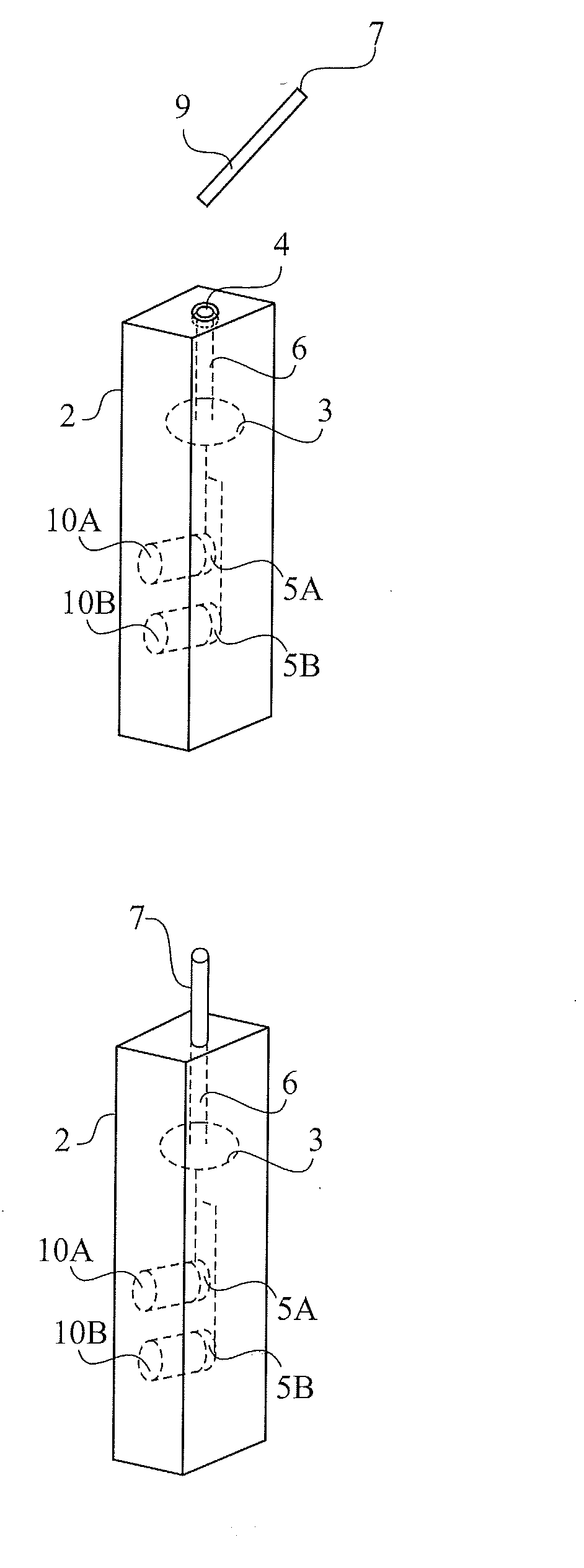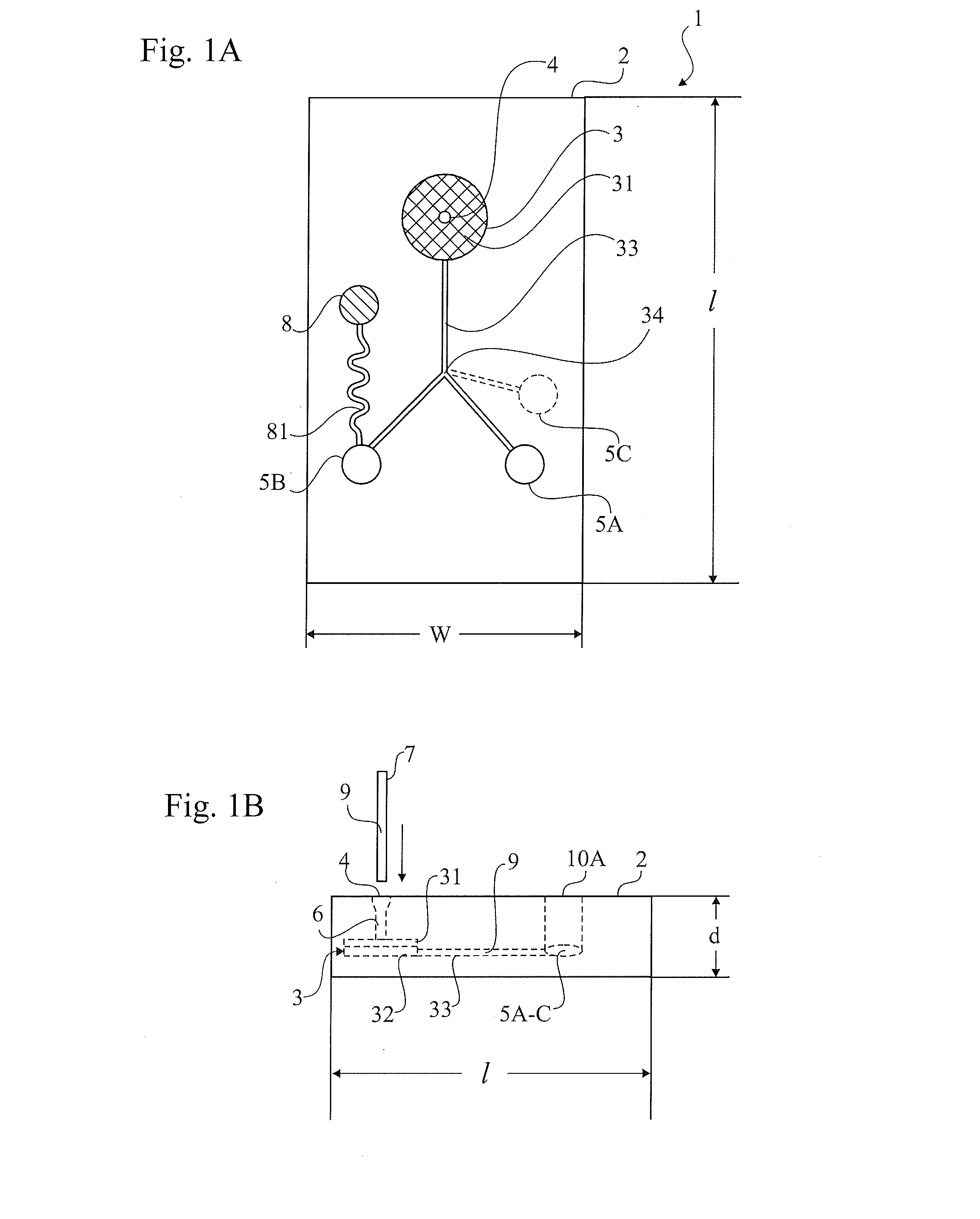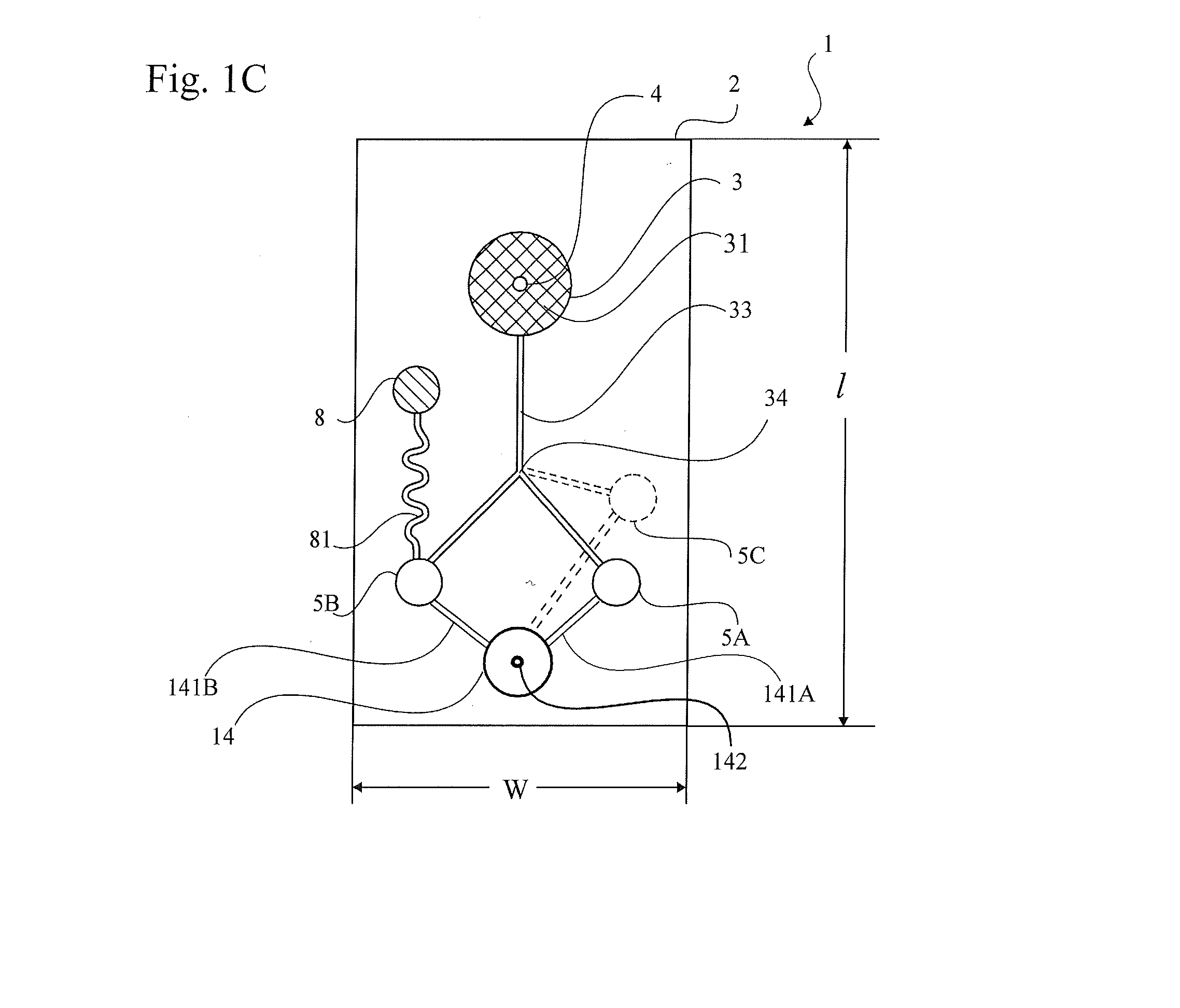Testing system for determining hypoxia induced cellular damage
a testing system and hypoxia-induced technology, applied in the field of testing system for assessing cellular damage, can solve the problems of inability to provide central laboratory, large investment cost for one-time setup, and inability to receive test results in some situations
- Summary
- Abstract
- Description
- Claims
- Application Information
AI Technical Summary
Benefits of technology
Problems solved by technology
Method used
Image
Examples
example 1
[0098]Tetrazolium salts, nitro blue tetrazolium (NBT), 2-p-iodophenyl-3-p-nitrophenyl-5-phenyl tetrazolium chloride (INT) and 3-(4,5-dimethylthiazol-2-yl)-5-(3-carboxymethoxyphenyl)-2-(4-sulfophenyl)-2H-tetrazolium (MTS) were dissolved separately in dimethyl sulphoxide producing 10 mM stock solutions. The mediators phenazine methosulphate (PMS) and 1-methoxy-5-methylphenazinium methylsulfate (mPMS) were dissolved separately in water producing 1 mM stock solutions. Stock solution of NAD was prepared in buffer. Sodium lactate was dissolved in water, and pH was adjusted to about 9 with 1 M tris.
[0099]Control sera (2.2 and 4.7 μkatal / l respectively) and blood sample from co-worker were used.
[0100]Blood samples were collected in Li-heparin tubes with separator (Vacuette, Greiner) and potassium-EDTA tubes (Vacuette, Greiner). The tubes were centrifuged for 15 minutes at 1500×g and plasma was transferred into Eppendorf tubes.
[0101]Enzyme assay was performed using conventional spectrophotom...
example 2
[0104]Assays were performed using an ELISA plate reader from Emax Molecular Devices, using 96-well plates in addition to visual inspection. The bottom of the 96-well pates is used as an optical surface for measurement and each well can contain up to 400 μl liquid. Absorbance will vary depending on solution depth in wells. Plates used in this experiment were from NUNC (high binding capacity).
[0105]Tetrazolium salts, nitro blue tetrazolium (NBT), 2-p-iodophenyl-3-p-nitrophenyl-5-phenyl tetrazolium chloride (INT) and 3-(4,5-dimethylthiazol-2-yl)-5-(3-carboxymethoxyphenyl)-2-(4-sulfophenyl)-2H-tetrazolium (MTS) were dissolved separately in dimethyl sulphoxide producing 10 mM stock solutions. The mediators phenazine methosulphate (PMS) and 1-methoxy-5-methylphenazinium methylsulfate (mPMS) were dissolved separately in water producing 1 mM stock solutions. Stock solutions of NAD and NADH were prepared in buffer. Sodium lactate was dissolved in water, and pH was adjusted to about 9 with 1 ...
example 3
[0115]The following example 3 relates to wet reagent composition for assessing presence of LDH in a plasma sample.
[0116]Tetrazolium salt, nitro blue tetrazolium (NBT), was dissolved in dimethyl sulphoxide producing 10 mM stock solution. The mediator 1-methoxy-5-methylphenazinium methylsulfate (mPMS) was dissolved separately in water producing 1 mM stock solutions. Stock solution of NAD+ was prepared in buffer. Sodium lactate was dissolved in water. N-methyl-D-glucamine was dissolved in water (1M) and pH adjusted to 10 with HCl.
[0117]Control sera (2.2 and 4.7 μkatal / l respectively) and blood sample from co-worker were used.
[0118]Blood samples were collected in Li-heparin tubes with separator (Vacuette, Greiner) and potassium-EDTA tubes (Vacuette, Greiner). The tubes were centrifuged for 15 minutes at 1500×g and plasma was transferred into Eppendorf tubes.
[0119]Reaction mixture: equal volumes of tetrazolium salt stock solution, mediator stock solution, lactate and NAD+ stocks were mix...
PUM
 Login to View More
Login to View More Abstract
Description
Claims
Application Information
 Login to View More
Login to View More - R&D
- Intellectual Property
- Life Sciences
- Materials
- Tech Scout
- Unparalleled Data Quality
- Higher Quality Content
- 60% Fewer Hallucinations
Browse by: Latest US Patents, China's latest patents, Technical Efficacy Thesaurus, Application Domain, Technology Topic, Popular Technical Reports.
© 2025 PatSnap. All rights reserved.Legal|Privacy policy|Modern Slavery Act Transparency Statement|Sitemap|About US| Contact US: help@patsnap.com



